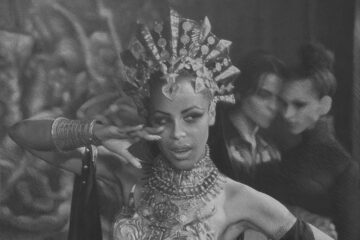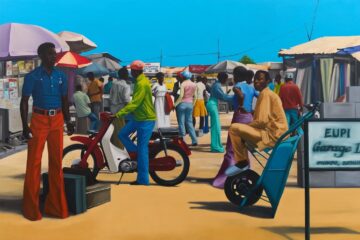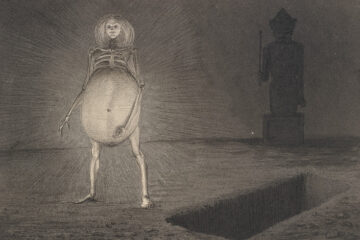Three exhibitions in Venice: the Pinault Foundation opens 2020 at Palazzo Grassi and Punta della Dogana
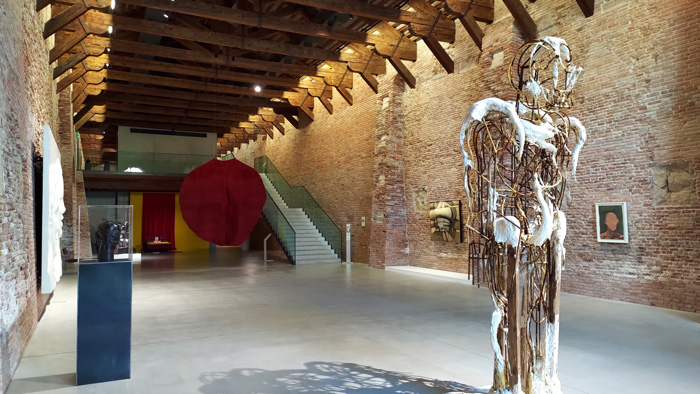
The exhibition season in Venice starts again thanks to the Pinault Foundation.
If the Biennale took a sabbatical, the Pinault Foundation lives up to its tradition and presents three new exhibitions: “Youssef Nabil. Once upon a dream” and “Henri Cartier-Bresson. Le Grand Jeau” at Palazzo Grassi, “Untitled , 2020. Three perspectives on the art of present” in Punta della Dogana.
Untitled , 2020. Three perspectives on the art of present
Let’s start right from Punta della Dogana, as if arriving in the city for the San Marco basin.
As the title says, the exhibition gives a broad “triple” perspective on the art of the last century (more or less).
The “three perspectives” are those of the curators Caroline Bourgeois, Muna El Fituri and Thomas Houseago, and the works on display, 67, have been almost all done in the past 130 years.
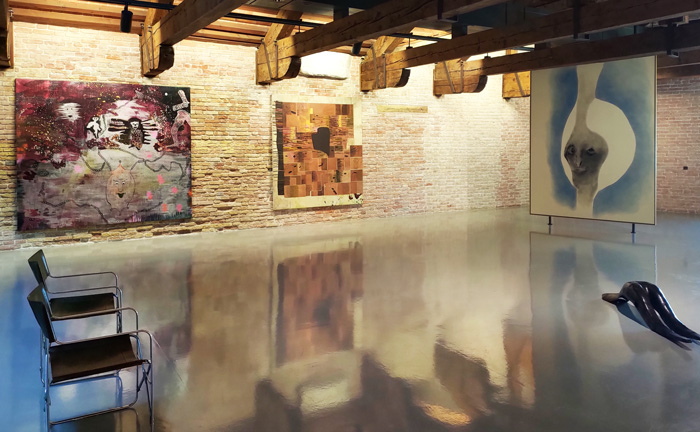
The oldest “contemporary” artwork, in fact, is a plaster statue by Auguste Rodin: “Iris, messangère des dieux” from 1890-91. Among the most recent works, those of Saul Fletcher, Kasia Fudakowski, Ellen Gallagher, Lauren Halsey and Henry Taylor, created especially for the exhibition.
To embellish this long art story, there are also some out-of-quota works such as the “Standing female statuette” of the Indus valley, dated between 2700-2500 BC, on loan from the Ligabue Collection in Venice. The inclusion of these “extra” works underlines that there is always a profound link between the works of art of all time.
All the art works are divided into 18 rooms, each dedicated to a specific theme. They range from Sex (room 2) to Death (room 4), from Engagement (room 9) to Utopia (room 16).
The central point, however, is the Atelier (room 11), inspired by the real atelier of one of the curators, the artist Thomas Houseago.
In this room, the visitor is asked to stop and to discover the place where the magic of the birth of art takes place.
“Untitled, 2020” is a rich, intricate exhibition that deserves a slow and in-depth visit, trying to immerse and identify with the varied world of art. It’s not simple, but that’s the way it should be.
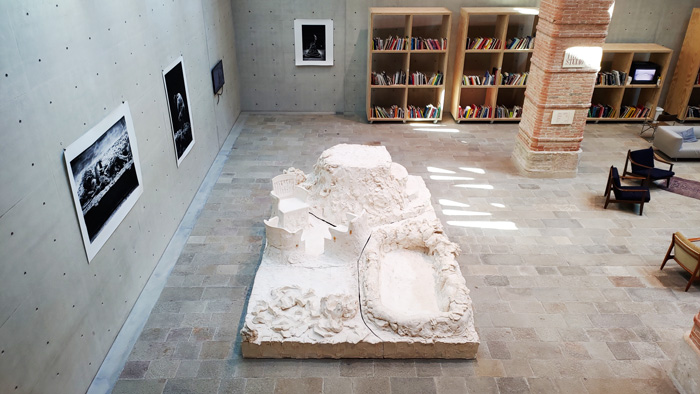
Youssef Nabil. Once upon a dream
At Palazzo Grassi, on the second floor, there is “Youssef Nabil. Once upon a dream“.
The exhibition, curated by Matthieu Humery and Jean-Jacques Aillagon, is a monograph dedicated to the Egyptian artist Youssef Nabil (Cairo, 1972).
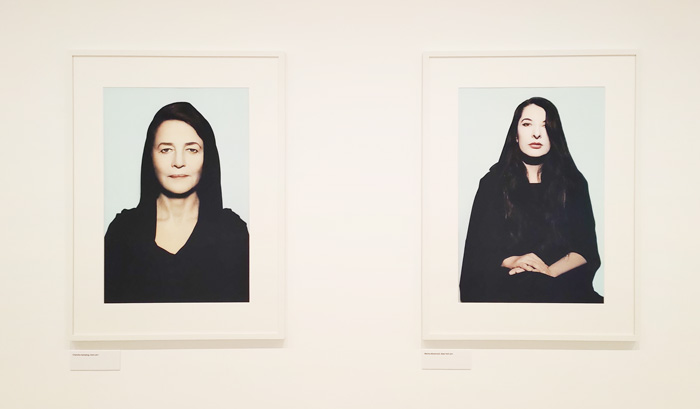
The works are mostly hand-painted photographs by the artist that evoke an ancient and legendary Egypt, as visitors of the late nineteenth century had to imagine.
The dreamy atmosphere of the photos, similar to bright watercolors, however, is in contrast with the themes treated, which oscillate between a melancholy (nostalgic?) look at the identity of the past and concern for the contemporary, social and political evolution of the country.
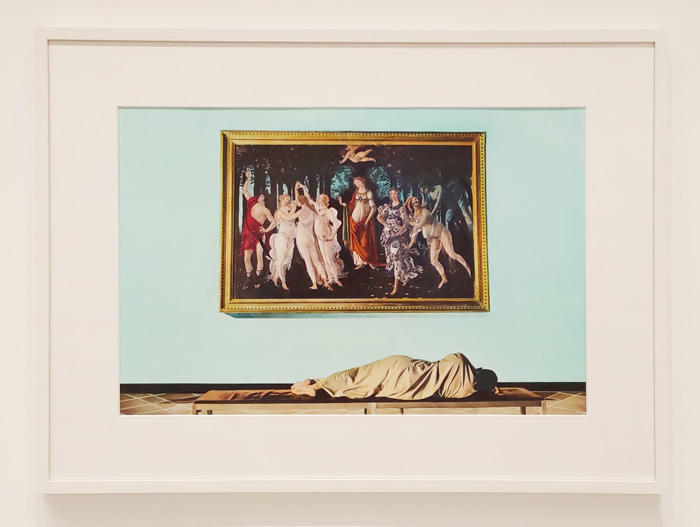
Henri Cartier-Bresson. Le Grand Jeau
On the first floor of Palazzo Grassi, finally, there is perhaps the most interesting exhibition of all, the one dedicated to Henri Cartier-Bresson.
The exhibition is an “intellectual game“, a “Grand Jeu“, as the title says.
The principle from which the experiment starts is simple: five curators select around fifty photos each from the Cartier-Bresson Master Collection and rearrange the selected works according to the themes they propose.
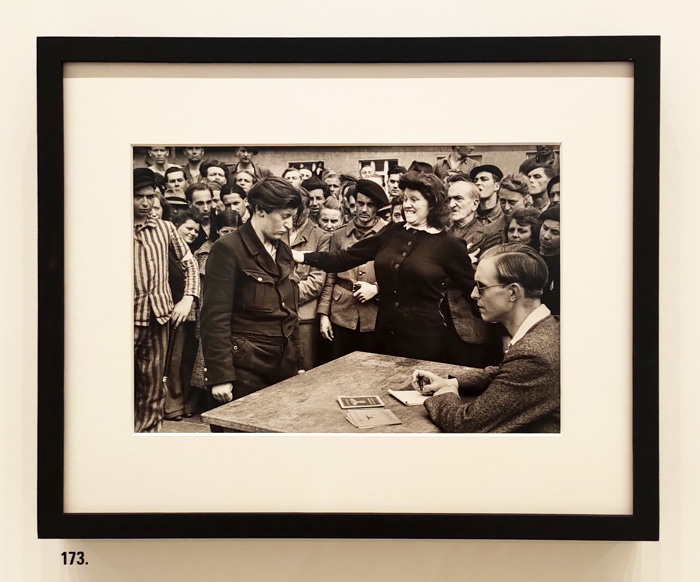
The curators who took part in the “game” are: François Pinault, great Art Lover and founder of the Pinault Foundation; Anne Leibovitz, one of the most important contemporary photographers; Javier Cercas, writer; Wim Wenders, famous director and Sylvie Aubenas, curator.
Just as the curators are heterogeneous, Cartier-Bresson’s work on which the curators are called to “play” is equally heterogeneous.
The Cartier-Bresson Master Collection is made up of 385 photographs printed in 1973 ranging from 1929 to 1973. In over forty years, the great French photographer has shot in half the world, from Spain in the years just before the Civil War to the postwar period in Italy, France, Ireland, Great Britain and Germany, up to the USSR and the USA. And then India, Japan, Mexico and others.
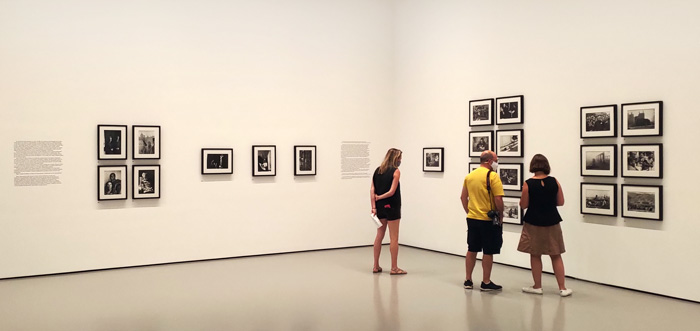
Along with hundreds of street photos, there are also the portraits of some of the most important characters of the twentieth century: from Igor Stravinsky to Samuel Beckett, from Ezra Pound to Alberto Giacometti, from Coco Chanel to Albert Camus and Jean-Paul Sartre.
The eye of Cartier-Bresson is unparalleled and the varied cross-section of the world that he provided us is open to a thousand curatorial re-interpretations.
The “Grand Jeu” experiment is therefore a way to always give new and stimulating readings to something that might seem “already seen” but which is not.
If you pass by the lagoon it is a must see.
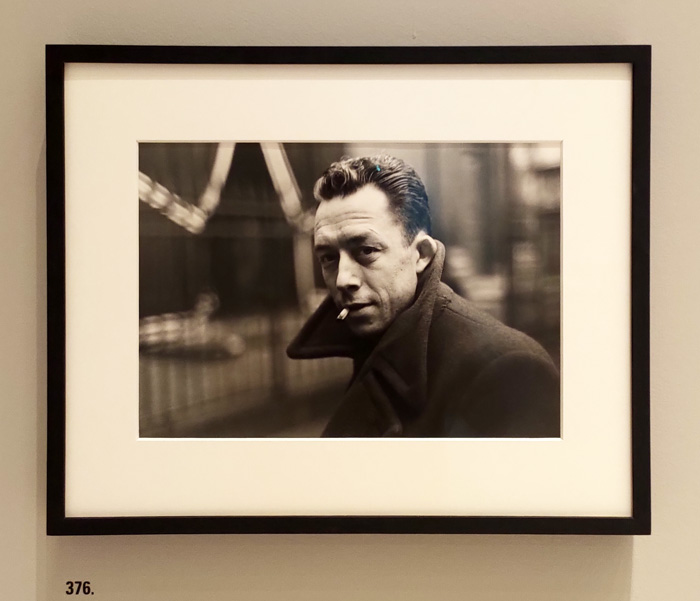
Untitled , 2020. Three perspectives on the art of present
Punta della Dogana, Venice
11/07/2020 – 20/03/2021
Youssef Nabil. Once upon a dream
Palazzo Grassi, Venice
11/07/2020 – 20/03/2021
Henri Cartier-Bresson. Le Grand Jeau
Palazzo Grassi, Venice
11/07/2020 – 20/03/2021
Discover: www.palazzograssi.it

